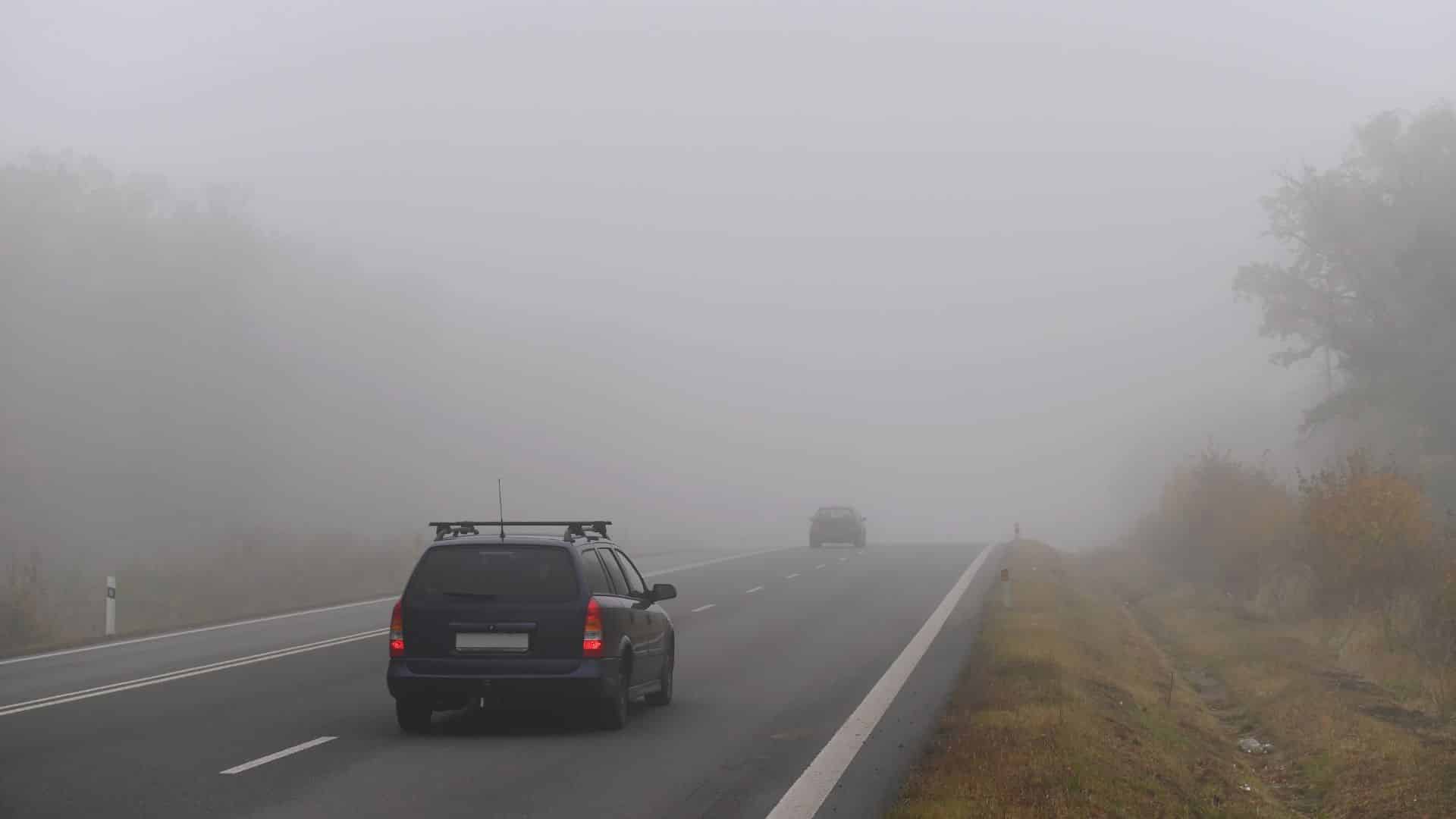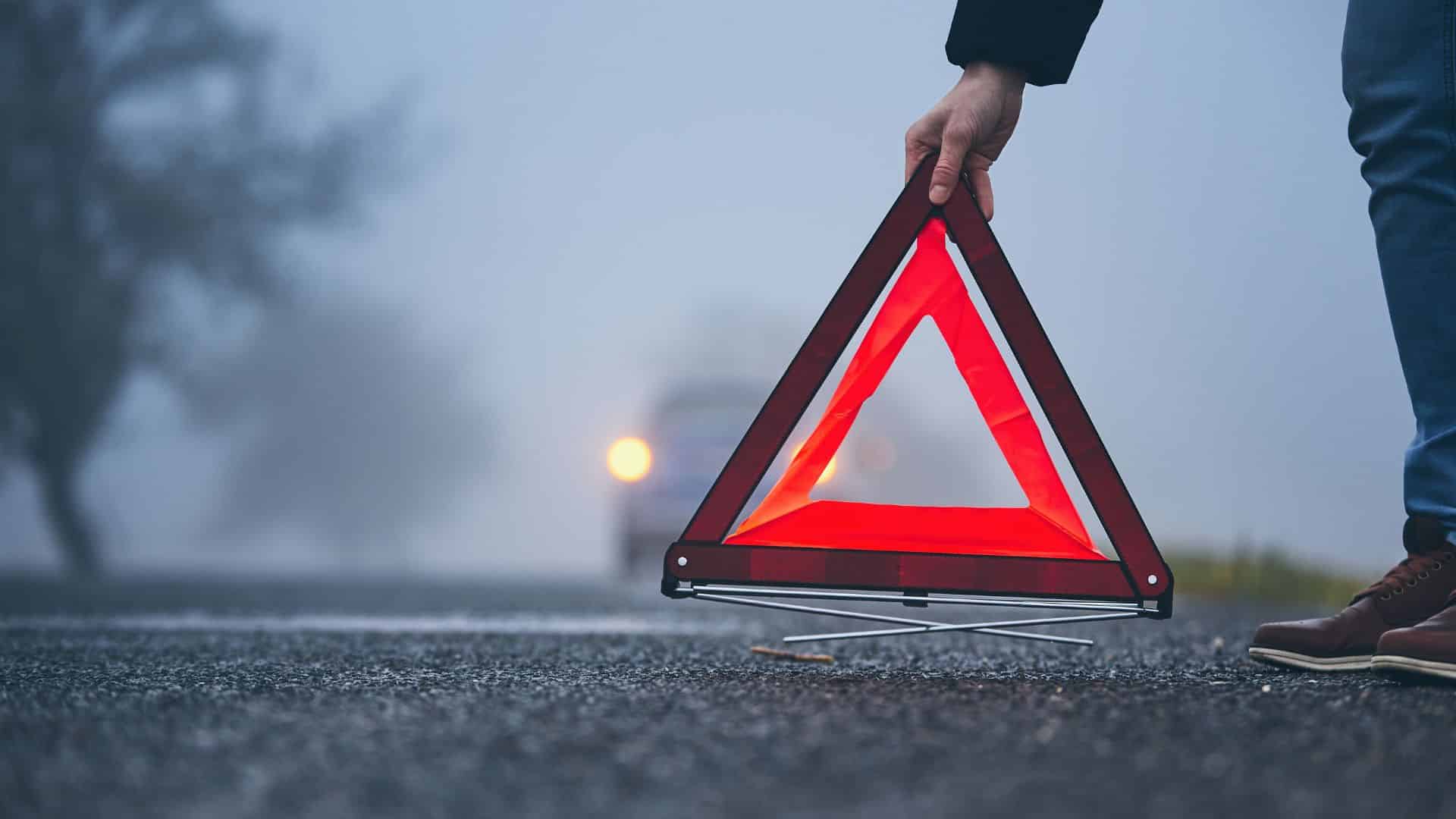If you have lived in a place with some moisture for any length of time, you have experienced fog. A cloud of gray envelopes everything with an eerie calm and quiet. There is a time and place where you can enjoy the fog. But that time and place are not on the road. Fog can be dangerous weather conditions for drivers and it can cause fog accidents.
The Federal Highway Administration reports a total of 5,891,000 traffic collisions of varying severity yearly in the United States. About a fifth of them – or 1,235,000 crashes – occur due to weather. Approximately three percent of these accidents, or 37,050, happen in foggy conditions.
The Phenomenon of Fog Explained
According to the National Geographical Society, fog is a cloud that touches the ground. Fog forms in highly humid conditions when there is a significant volume of water vapor. This gaseous water vapor condenses, creating tiny visible water droplets suspended in the air. These water droplets are what you observe as fog.
The formation, density, and duration of fog depend on several factors, including humidity and temperature. Some fog can persist for hours before evaporating. Other fog can appear quickly and disappear just as quickly.
No matter how long the fog lasts, driving in it is difficult. Thick fog can obscure buildings and structures like bridges. But even less dense fog can cover a roadway, making it challenging to see turns, cross-streets, and other traffic.
Avoiding Fog Accidents
If it is foggy, consider whether you must drive through these conditions or whether you can delay your travel until the fog clears. If you must travel, the following safety tips can help make your trip safe:
Give Yourself Extra Time and Take It Slow
Leave your point of origin early, and allow yourself plenty of time to reach your destination. Even if you feel comfortable traveling at full speed through the fog, other traffic on the road may not share your bravery. Taking your time gives you a better opportunity to react to slow traffic or other hazards in your path.
Make Yourself Visible to Others
Next, make every effort to increase your visibility to others on the roadway. Turn your car’s headlights on and use the low-beam setting.
Do not use your brights, even if traveling through the fog at night. Your high beams can reflect off of the fog’s water droplets, reducing your visibility even further and doing little to make yourself more visible to others.
If your vehicle has automatic lights that turn on and off according to the amount of ambient light, you may need to turn your lights on manually.
Consider using your hazard lights, especially if traveling below the speed. Doing so can make your vehicle even more detectable to other motorists and alert other drivers approaching you that they should approach and pass you with caution.
Stick to Well-Known Routes with Fewer Turns

A foggy day is not the time to try that new route to work or to take the scenic drive with twists and turns. Instead, choose a path familiar to you with few turns. It is best if your course has a few intersections and includes landmarks you can recognize.
Even the most familiar path can seem strange and foreign when fog obscures it, increasing the likelihood of fog accidents.
Give Other Drivers Plenty of Room
Finally, you may be comfortable traveling at or above the speed limit in fog, but other drivers may not. If the driver in front of you is traveling slowly or stops, and the fog obscures your view of them, you may not see them in time to stop or slow to their speed.
Your Legal Rights After Fog Accidents
Fog is a weather condition, and as a result, a crash that occurs in the fog through no fault of any driver will not lead to any lawsuit. Your auto insurance policy will cover the claim if you are injured or your car is damaged.
However, just because fog is present does not mean that other drivers cannot act negligently. On the contrary, drivers may still work carelessly under foggy conditions, increasing the chance of an accident. Some of the ways this can happen include:
- Driving without their low-beam headlights activated
- Trying to use high-beam headlights while driving
- Speeding or going too fast considering the surrounding traffic
- Weaving in and out of traffic, tailgating, or otherwise driving aggressively
Courts and juries routinely consider these and similar acts negligent because they are at odds with what a reasonably careful driver would do under foggy driving conditions.
If you live in an at-fault insurance state, you should file any claim or lawsuit against the driver who caused the accident. While the presence of fog may mitigate the number of damages the court orders the at-fault to pay you and other injury victims, fog alone does not give other drivers licenses to be careless or reckless on the roadway.
Make sure to drive carefully yourself. If you are also acting carelessly by traveling too fast or not having your low-beam headlights on, these facts could also reduce the amount of any compensation award you might receive during your case.
Speak with Experienced Fog Accidents Attorneys Today
When another careless driver hurts you or your family in fog accidents, turn to the professionals at The Joel Bieber Firm. If you are unsure whether you can file an insurance claim or bring suit against another driver involved in the crash, our knowledgeable legal professionals can help resolve this matter.
Call or reach out to The Joel Bieber Firm for additional information about how to protect your rights during a fog accidents lawsuit.
Interesting Reads:
Top Causes of Traffic Accidents in Virginia

